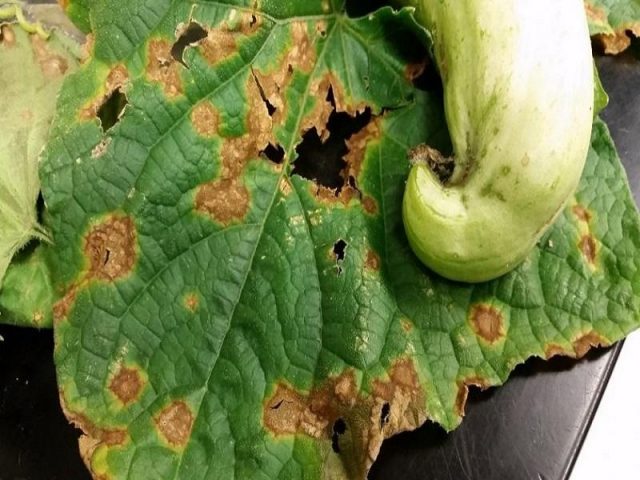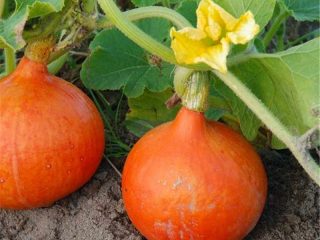Content
Butternut pumpkin is one of the new varieties for domestic gardeners, loved for its taste, beneficial properties and interesting shape.
Due to its unusual appearance, it is sometimes confused with zucchini. They are really similar, but the taste of pumpkin culture is much higher.
The variety comes from America. In 1960, it was obtained at an experimental station in Massachusetts as a result of crossing the Israeli cultivated butternut squash and wild African plants of the same species.
The variety has taken root well in Russian conditions.
Description of the Butternut pumpkin variety
Butternut squash is an annual vegetable. The stems of the plant are long, creeping along the ground, 1.5 - 2.5 m long. The plants cling to any support with branched tendrils. They are covered with thorns and large lobed leaves (30 cm across). The plant has large unisexual flowers with a bell-shaped calyx and corolla. The anthers are convoluted, the stigma is five-lobed.The main root is a taproot, penetrates the soil up to 2 m, and spreads 4 m wide.
In all the photos, the Butternut pumpkin has a fruit that looks like a guitar or pear. Its maximum weight is 3 kg, which is convenient for storage and use. The pulp is sweetish, with the aroma and taste of nutmeg. There is no pumpkin smell. It is characterized by uniformity and absence of fibers. It can be consumed fresh and processed. The peel of the fruit is bright orange and dense. Beneath it is an oily pulp. The seeds are located in the expanded part of the fruit. There are significantly fewer of them than in other varieties.
Due to its structure and taste, butternut squash can be subjected to various heat treatments before being eaten - baked in the oven, fried, boiled. Its texture does not allow it to lose a large amount of moisture. Can be cooked with meat, vegetables, fruits or eaten raw. Keeps well frozen.
The difference between Butternut pumpkin and regular pumpkin
Unlike conventional varieties, Butternut has pulp containing up to 11.5% sugar. It is denser, oilier, and has a subtle aroma.
Plants are demanding of humidity and heat. Features include the shape of the Butternut pumpkin and its rapid ripening. The high carotene content allows it to be used for baby food.
According to the description of the variety, butternut squash should be picked only after the fruits have fully ripened. An overripe fruit inhibits the growth and development of others, while an underripe fruit will not be able to reach ripeness if it has already been picked.
Characteristics of the Butternut pumpkin variety
Butternut is a heat-loving species, but can grow at the latitude of St. Petersburg and the Leningrad region.During the short summer, it is possible to form several fruits before the autumn frosts. Unripe pumpkins can be left for use in preparations.
According to reviews, Butternut pumpkin can produce from 5 to 15 fruits per season. Productivity depends on growing conditions and climate. On average, it is 15 kg per bush.
By forming lashes, you can get a different number of pumpkins: several large ones, up to 3 kg, or many small ones, weighing 1 kg. This ability allows us to satisfy the needs of lovers of large forms and small fruits.
The plant requires watering and fertilizing. With a lack of moisture, pumpkins develop slowly and bear fruit poorly.
Temperature below +10 oThe plant does not tolerate C well; for this reason, in temperate climates, the Butternut variety can only be grown with the help of seedlings.
“Warm bed” solves problems with root rot. It will help maintain soil temperature during cold spells and prolonged rains.
Resistance to pests and diseases
If agricultural technology and care rules are not followed, the Butternut variety is not protected from a number of diseases:
- bacterial – in which damage occurs to the leaves, the shape of the fruit, and the qualities of the final product;
- fungal - a white coating that causes rot.
In the photo of a butternut squash there are bacteriosis lesions in the form of brown spots. Later they dry out, fall through and holes form. The causative agent of bacteriosis persists for a long time in seeds and plant residues. Most often, the disease develops with increased humidity and temperature changes. To combat the disease, it is necessary to remove the affected leaves and fruits and treat the plants with Bordeaux mixture.
A sign of white rot is the appearance of plaque. The fruiting bodies are white at first and later turn black.The infection spreads rapidly in high humidity and low temperatures. Fungal infections are fought with fluff and charcoal.
The affected areas become mucous and become covered with mycelium. Its appearance in the root zone leads to the death of the Butternut pumpkin variety. Timely weeding, fertilizing, and removing damaged parts of the plant serve as prevention in the fight against white rot.
Small white spots on the leaves are a sign of powdery mildew. Photosynthesis is disrupted inside the plant, as a result of which Butternut turns yellow and dries out. To combat infection, a 70% solution of colloidal sulfur is used.
Pests include:
- spider mite;
- sprout fly;
- melon aphid;
- slugs;
- wireworm
For preventive purposes, it is necessary to destroy all remnants of vegetables from the beds, use insecticides and baits to destroy pumpkin pests.
Advantages and disadvantages
Butternut received from its parents - African and nutmeg pumpkins - a lot of properties that became its advantages:
- early maturity of the variety - time from germination to fruit appearance - no more than 3 months;
- storage – the vegetable does not lose its quality for several months;
- low calorie butternut squash;
- delicate aroma of fruits;
- sweet taste;
- Possibility of fresh consumption;
- the small weight of each fruit, allowing you to use it whole;
- finding seeds only in the seed chamber;
- a small number of them;
- thin crust of the fruit;
- beautiful appearance of pumpkins;
- Possibility of growing on trellises.
The disadvantages of the variety include:
- increased demands on soil fertility;
- the need for careful care - maintaining humidity, tying, regular feeding;
- dependence on ambient temperature.
Benefits of Butternut Pumpkin
Nutritionists recommend eating Butternut pumpkin fruits to combat excess weight. Its calorie content is 45 kcal per 100 g of product.
The composition includes vitamins of groups A, C, E, B6, K, thiamine, folic acid. Pumpkin is rich in minerals: calcium, magnesium, potassium, zinc, copper, selenium. The fruits contain a lot of flavonoids - alpha and beta carotenes, lutein.
The benefits of Butternut pumpkin for the body are invaluable:
- it supports the health of the pregnant woman and child thanks to folic acid;
- successfully fights PMS symptoms – cramps, mood swings;
- improves intestinal motility;
- removes toxins from the body;
- thanks to magnesium in fruits, the risk of cardiovascular diseases is reduced;
- minimizes the risk of strokes;
- fights high blood pressure;
- prevents the formation of cholesterol plaques;
- resists cancer - thanks to antioxidants;
- strengthens the immune system, protects against viral infections;
- helps fight cataracts and age-related macular degeneration;
- prevents the development of osteoporosis, increasing bone density;
- fights prostate hypertrophy.
Thanks to provitamin A, vitamins E and C in the Butternut pumpkin fruit, its use helps prevent premature skin aging, early wrinkles, and age-related pigmentation. Biologically active substances make hair shiny, prevent dandruff and split ends.
Butternut fruits are successfully used for making homemade cosmetics - masks, scrubs.
Growing Butternut Pumpkin
In Russian conditions, the plant is best grown in seedlings. The exception is the southern regions of the country, where the climate allows sowing directly into the ground.
You need to prepare the seeds. First, they are heated in a warm place for a month. Next, they need to be calibrated - placed in a saline solution for 1 hour. The seeds that have sunk to the bottom are suitable for sowing, and those remaining floating on the surface are thrown away. The next stage of preparation is disinfection. For this purpose, they are placed in a weak solution of potassium permanganate for 12 hours.
Hardening is carried out in the refrigerator, on the bottom shelf.
In the southern regions, in early June, Butternut pumpkin is planted in the ground, 2 seeds per hole.
For the seedling method, you need cups and a soil mixture consisting of 2 parts peat, 1 part humus and 1 part rotted sawdust. Having filled the container, the hatched seeds are dipped into it and the cups are placed in a warm place.
After the threat of return frosts has passed, Butternut pumpkin seedlings are planted in open ground. At this time, the seedlings have two true leaves.
The soil is first dug up, humus and mineral fertilizers are added. The site should be on the sunny side. The planting pattern is 100 cm by 140 cm. The best predecessors are legumes, onions, and cabbage. You should not plant butternut squash after potatoes, zucchini, melons, and watermelons.
Further care consists of loosening, hilling, weeding, watering, and fertilizing. She likes organic and mineral fertilizers. Watering should be plentiful during the growth period. When the ovary is already formed, moisture can be reduced so that fruits grow, not leaves. In the ripening phase, watering is stopped completely. It is recommended to pinch the lashes on the second leaf after the ovary.The Butternut pumpkin variety is harvested when the stalk dries out and the bark hardens.
How to cook butternut squash
The use of Butternut pumpkin for food is universal. It can be eaten raw, used in salads, fried, baked, steamed, grilled, boiled. It goes well with meat and other vegetables. There are many recipes for preparing butternut squash - soups, purees, jam, pancakes, seasoning. Use is limited only if there is an individual intolerance to the product.
Snack
For preparation you will need:
- Butternut pumpkin fruits;
- white and red cabbage;
- lemon juice;
- olive oil;
- ground pepper.
Preparation procedure:
- Remove the seeds from the fruit and grate it.
- White cabbage is chopped.
- 16 leaves are separated from red cabbage. Place them on a plate, sprinkle with lemon juice and olive oil.
- Place the mixture on the leaves.
- Season with sauce and pepper.
Cream soup
To prepare you need:
- Cut butternut squash in half.
- Remove seeds.
- Brush the fruit halves with oil and sprinkle with salt and pepper.
- Place cut side up on a baking sheet.
- Bake for 30 minutes, turn over and bake again.
- Wrap the garlic in foil and bake for 15 minutes. in the oven.
- Remove the pulp from the fruit and peel the garlic.
- Fry the onion, add the zucchini and butternut squash.
- Simmer in hot broth.
- Add garlic.
- Using a blender, puree the mixture.
- Pour the heated cream into the soup, add grated cheese.
- Boil.
- Pour into plates, add herbs.
Pumpkin with honey
To prepare butternut squash baked in the oven, you need:
- Peel the pumpkin fruits and remove the seeds.
- Cut into pieces.
- Place the mixture in a saucepan and cook until half cooked.
- Place the boiled pieces in a mold and bake until brown.
- Mix orange juice, honey, mustard, sesame seeds.
- Spread the mixture over the pumpkin and bake for 5 minutes.
Sauce
This is one of the easiest butternut squash recipes:
- In a blender, mix 6 tablespoons of olive oil, juice of 6 limes, 3 mint branches, salt and pepper.
- Beat the mixture.
- Add pumpkin pulp.
- Serve with oily fish.
Spaghetti with pumpkin
Even those who don’t like butternut squash like the dish:
- Peel two cloves of garlic, chop and fry.
- Remove garlic from oil, fry onion, cut into rings.
- Remove the onion and fry the diced pumpkin.
- Add onion, parsley, salt.
- Cook spaghetti.
- Add them to vegetables.
- Put it out.
- Sprinkle with cheese before serving.
Conclusion
Butternut pumpkin has an interesting graceful shape, reminiscent of an hourglass. This is not her only advantage. It is popular due to its properties.
When choosing a butternut squash, you should give preference to fruits with a matte skin that makes a dull sound when tapped. The ripe fruit has an unusual taste and provides an opportunity for culinary experiments, the result of which is not only tasty, but also healthy.
Reviews of Butternut pumpkin
















